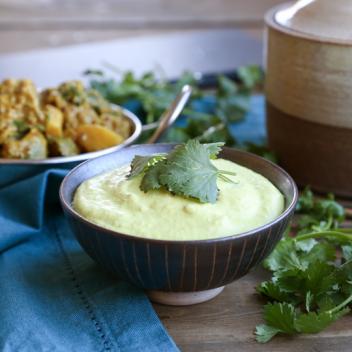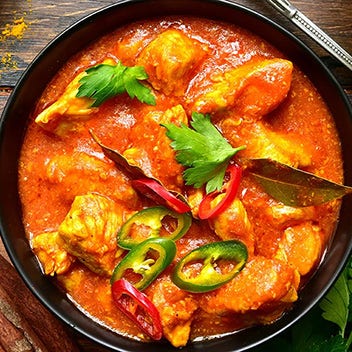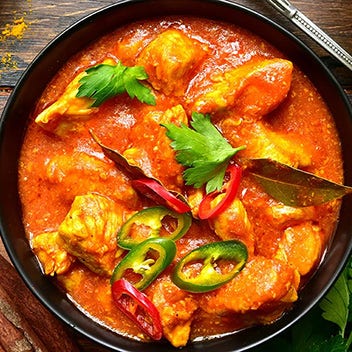Curry is much more than a single bottled spice blend. Explore how to make curry, what it is and where it comes from in this basic guide.
What is Curry?
"Curry" is an anglicized Tamil word (kari) which describes a sauce, but has evolved to describe a myriad of sauces, spice blends, and prepared dishes that are a major feature of many cuisines.
Traditional curry dishes are built by careful selection, blending and treatment of a variety of whole spices, herbs and aromatic vegetables. These dishes often use multiple techniques such as dry roasting, oil frying, grinding and mashing before the flavors are constituted into the liquid deglaze.
WHAT ARE CURRY POWDERS?
Curry powders are blends of ground spices that are used to easily create sauces and/or season finished dishes. Curry powder blends are a convenient way to use the signature flavors of curries; simply add the powder to the hot oil in which you've sauteed meat, vegetables, seafood or tofu and deglaze with liquid stock or coconut milk.
How to Make Curry Powder
Want to create your own blend of curry spices from scratch? Here’s a basic curry powder recipe that contains all the signature flavors. You can easily customize it with additional spices.
Ingredients:
1 tablespoon coriander seed
1 tablespoon cumin seed
1 teaspoon turmeric powder
1/2 teaspoon fenugreek seed
1/2 teaspoon yellow mustard seed
1/4 teaspoon cayenne powder
1/4 teaspoon ginger powder
1/4 teaspoon salt
Directions:
1. Heat a heavy bottomed pan over medium heat. Add coriander, cumin fenugreek and salt to warm pan.
2. Lightly dry roast the spices until you detect a slight color change and a pleasant aroma (do not scorch!).
3. Remove dry roasted spices from heat and place them in a mortar and pestle. Allow to cool.
4. Add mustard seed and grind to a powder. Mix in turmeric, cayenne and ginger powders.
Use immediately or store in an airtight container.
Flavors of Curry
Turmeric, cumin, chilies (red or green) and ginger are essential ingredients in many curries, but coriander, fenugreek, mustard, pepper, cinnamon, clove, cardamom and nutmeg can be just as vital, along with fresh aromatics such as garlic, onion, cilantro, lemongrass, lime and lemon to name but a few.
The flavors of curry can be used in unconventional ways. In Germany, curry powder is blended into ketchup and served with sausage and fries as the national street food currywurst. Curry powders can be used as meat rubs, popcorn seasoning and as a spicy addition to brines and pickled vegetables.
Difference between Indian and Thai curries
In general, Indian curries feature meat or vegetables simmered in many different rich, warm to spicy-hot gravy-like sauces, while Thai curries often feature bright, hot sauces with fish sauce and a cooling addition of coconut milk.
Wet vs. Dry Curry
“Curry pastes” are built by combining ground dry spice ingredients with oils like sesame or clarified butter. The process usually also includes a selection of mashed or pureed aromatics such as chilis, garlic, ginger and lemongrass. A dish of rice, noodles, vegetables or meats seasoned with this paste is known as a “dry” curry.
“Wet” curries consist of gravy-like sauces, created by loosening a curry paste with a liquid such as water, stock, yogurt or coconut milk. Various vegetables and meats are simmered in these wet curry sauces and usually served over rice or with bread, especially flatbreads for dipping (such as pita or Indian naan.)
Red vs. Green Curries
Red curries often feature a bit of sweetness from the fresh and/or dried ripe, red chili peppers they are made from. This sweetness may be enhanced by the addition of a sweetener such as sugar, honey or palm syrup. Green curries usually feature the vegetal fresh flavor of unripe green chili peppers.









